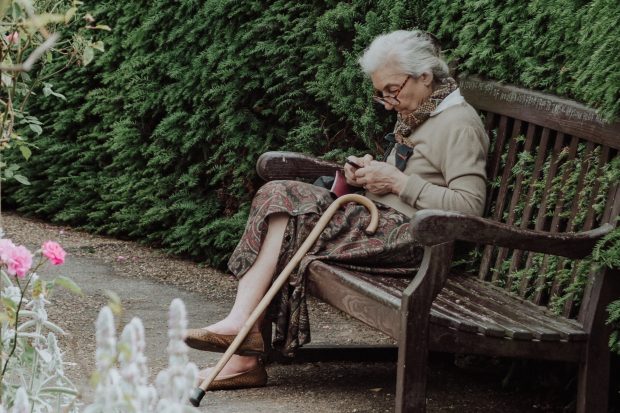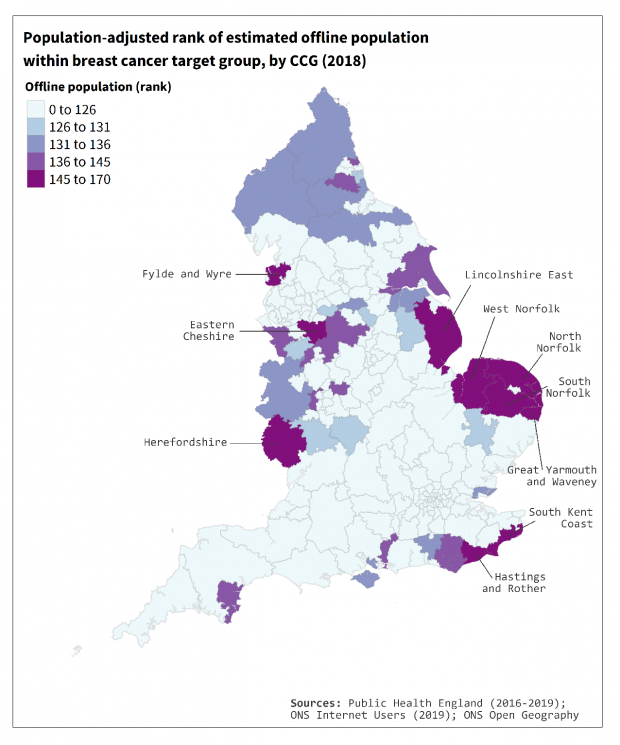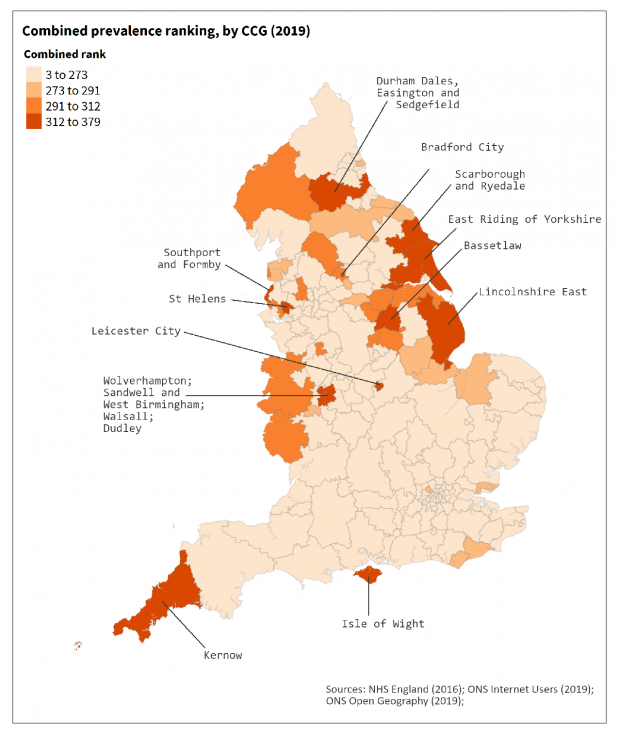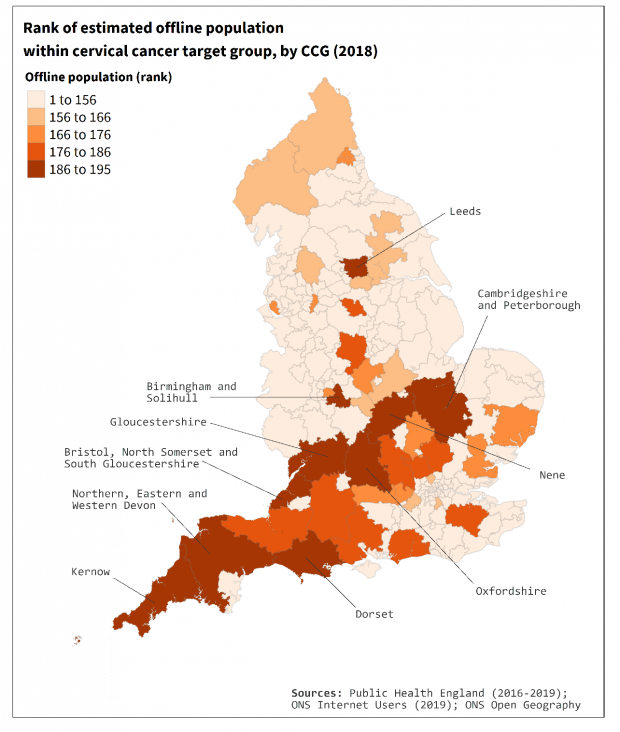
PHE Screening plans to introduce more online information about screening programmes to coincide with a reduction in printed leaflets from Spring 2020.
The plan is to:
- continue to send out printed leaflets with prevalent invitations (these are first invitations or invitations to people who have not previously attended for screening)
- signpost to digital information for incident invitations (these are invitations to people who have attended their previous screening appointment)
At digital inclusion charity Citizens Online, we’ve been conducting an Equality Impact Assessment of how this change might impact different groups of people in England.
We have been super busy on the research front over the past 3 months looking at all the equalities angles we can think of. We hope we have left no stone unturned!
We’re finalising the work and will be sharing the results with PHE Screening. We’re aiming to publish it on our website in April 2020 and we’ll let you know when it’s live.
There is still an opportunity for those of you working in screening to feed into the process and tell us your opinions.
There will be another quick survey this month to collect more of your thoughts and insights. You can also contact me directly.
What follows is a snapshot of some of the insights we’ve been collecting.
Survey feedback
We’ve had a great response to our survey regarding the proposed changes. Nearly 600 people completed it, including PHE and NHS staff, and members of the public.
Responses ranged from unhappiness and concern to unqualified approval for the changes. Many people have highlighted both advantages and potential problems.
The pool of respondents was not as representative of the population as we would have liked – 77% of respondents identified as women and 80% were health professionals. We hope we’ve represented all parts of the population, however, through our other discussions and research.
Of those who disclosed their identity:
- 10% said they are disabled
- 7% gave their race or ethnicity as other than White
- 3% said their sexual orientation was other than straight/heterosexual (17 respondents) or that their gender identity was not the same as that assigned at birth (1 respondent)
Your thoughts
The most common concerns were around digital exclusion being linked to lack of skills, confidence, connectivity and affordability.
Some people expressed concern about people who had more than one characteristic associated with low digital inclusion. People were most concerned about those who are a combination of:
- older
- disabled
- with poorer digital skills
- with poorer English language skills
- living with poverty
- in ‘harder to reach’ communities or locations
Several people thought the digital switch is a good idea in principle but questioned whether screening is ready for it yet. Many respondents were concerned that digital information could be hard to access, find or re-find. As one member of the public put it, there was a feeling that it's important that "everyone can be informed about screening in a format that suits them".
One member of the public with learning disabilities, including autism, said:
I find it very helpful to have printed information as well as digital, and to have things explained face to face.
Those in favour of a shift to digital referred to sustainability and cost-saving advantages. Many said online information would be their preference and is in some ways more convenient. The possibility of automatic translation via online language tools was also mentioned.
NHS Antenatal and Newborn (ANNB) Screening Programmes
PHE Screening carried out focus group work to gather the views of pregnant women on the existing screening information and the proposed digital changes.
The groups included women whose first language is not English and women from disadvantaged backgrounds. The full results of these focus groups can be found in this PHE Screening blog post.
Overall, most women were positive about the changes and welcomed online information. The ANNB screening animation was particularly popular.
NHS Abdominal Aortic Aneurysm (AAA) Screening Programme
Screening for abdominal aortic aneurysms is offered to men in the year they turn 65.
The ONS Labour Force Survey 2019 identified that, across the UK, 7% of people aged 55 to 64 are not internet users.
The digital exclusion risk within this target group is therefore high due to the age of those invited. However, PHE Screening plans to continue to send printed leaflets with AAA screening invitations for the foreseeable future because it is a one-off screening test.
NHS Breast Screening Programme
Breast screening is offered to women in the age group 50 to 70, although some women aged under 50 and over 70 are also invited as part of the age extension trial.
We identified clinical commissioning group (CCG) areas where there is both a high number of people in the screening target group and people expected to be offline, creating a combined map of higher risk areas for digital inequality.

NHS Diabetic Eye Screening Programme
Diabetic eye screening has the widest age range of eligible population - all people with diabetes aged 12 or over are invited.
By identifying the prevalence of diabetes geographically within England and checking this against areas of higher digital exclusion (offline populations) we gained some insight into areas where the public might find it harder to engage with online information about diabetic eye screening.

NHS Cervical Screening Programme
The cervical screening programme invites the largest number of people annually for screening – and across a relatively wide age range.
In England, there are around 16.4 million women who will be eligible for cervical screening between 2020 and 2025. We estimate about 335,000 of them (2%) will not be internet users.
We created a combined data map of England to show areas where there is perceived risk of higher populations of people who are offline and eligible for cervical screening.

NHS Bowel Cancer Screening Programme
The risk of digital exclusion is relatively high in bowel cancer screening because of the age range of the target group. Screening is offered to all men and women aged 60 to 74 while people aged 75 or over can request screening.
We again looked at the CCG areas where we thought the highest risks would be for both numbers in the target group and for digital exclusion (see table below).
The 10 CCGs below ranked highest for the proportion of people estimated to be offline of those who are eligible for bowel screening. Starting with the CCG with the highest proportion, they are:
- Cornwall
- Dorset
- Somerset
- Northern, Eastern and Western Devon
- Gloucestershire
- Cambridgeshire and Peterborough
- Bristol, North Somerset and South Gloucestershire
- Nene
- Leeds
- Birmingham and Solihull
Next steps
We are just finishing our analysis of all the information we’ve collected and are working on the final report for PHE Screening. The last step will be to add in the final survey results. Keep an eye on the blog to find out when the report is published.
PHE Screening blogs
PHE Screening blogs provide up to date news from all NHS screening programmes. You can register to receive updates direct to your inbox, so there’s no need to keep checking for new blogs. If you have any questions about this blog article, or about population screening in England, please contact the PHE screening helpdesk.